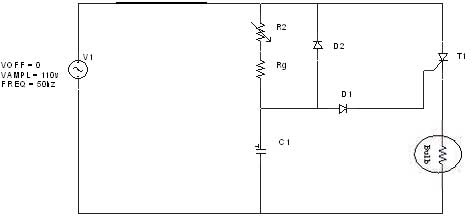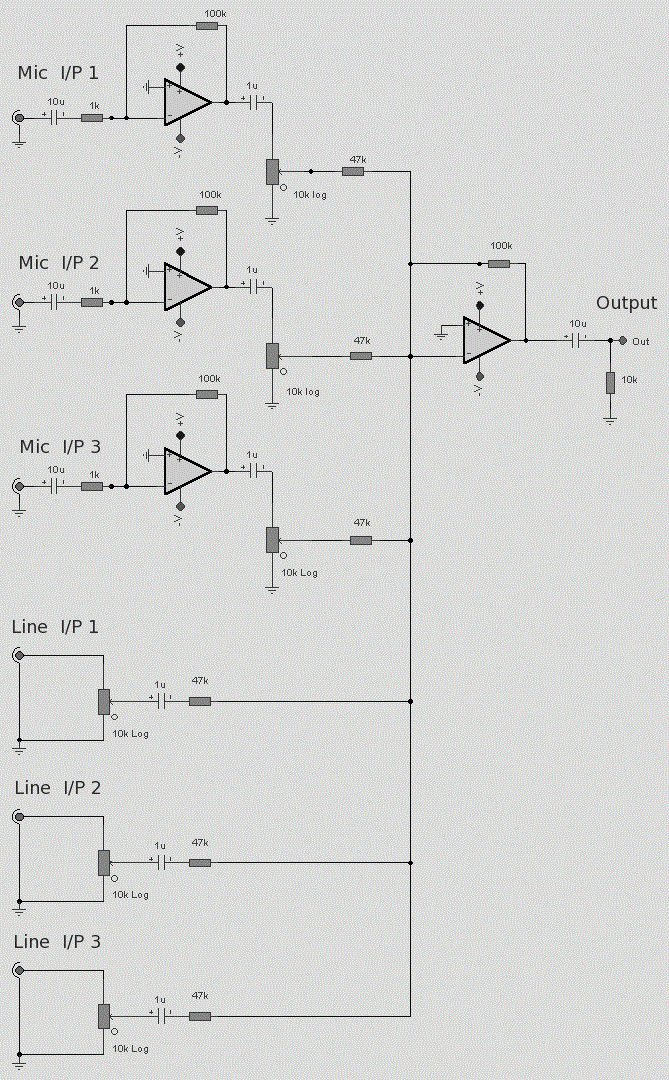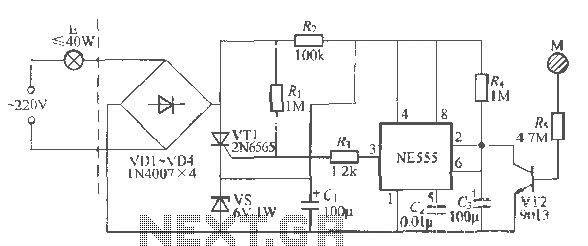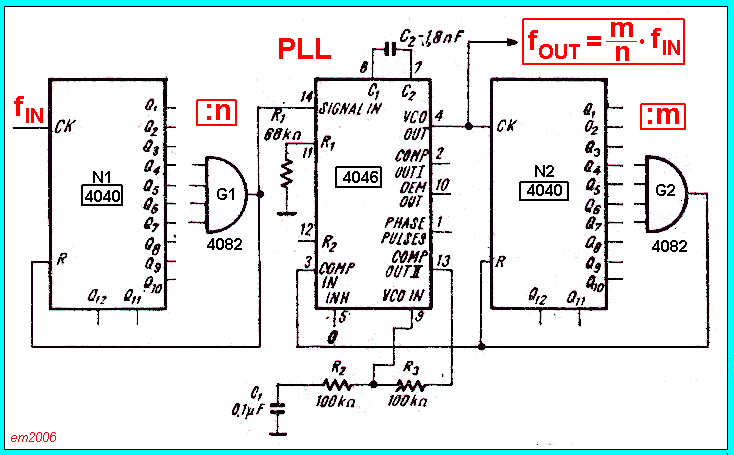
Time delay circuit (555)
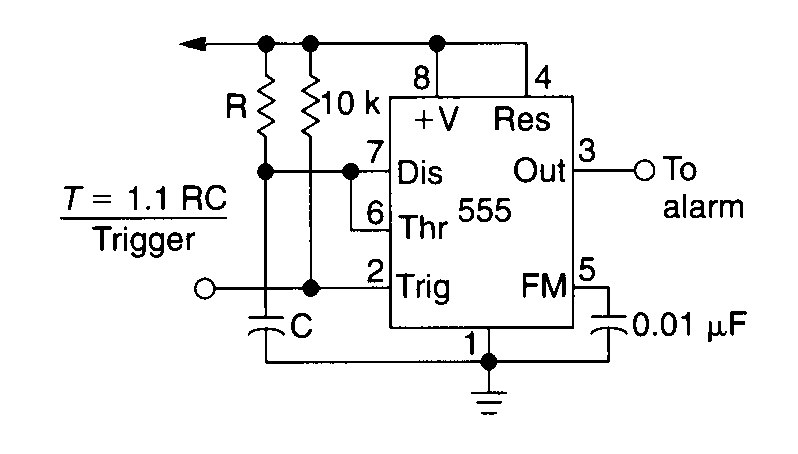
A very regular configuration of the 555 astable timer to work as a timer to trigger an alarm or any other equipment connected to pin 3. R resistor should be replaced with a potentiometer that will change the time delay. Capacitor C should be calculated too (there are many 555 calculators around internet). Is a common design, not very accurate but very useful in many everyday applications.
The 555 timer in astable mode is widely utilized for generating square wave signals and timing applications. In this configuration, the 555 timer operates continuously, switching between its high and low states, thus creating a pulse output on pin 3. The frequency and duty cycle of the output waveform depend on the values of the resistors and capacitor connected to the timer.
In a typical setup, two resistors (R1 and R2) and one capacitor (C) are connected to the 555 timer. The output frequency (f) and the duty cycle (D) can be calculated using the following formulas:
- Frequency (f) = 1.44 / ((R1 + 2 * R2) * C)
- Duty Cycle (D) = (R2 / (R1 + 2 * R2)) * 100%
In this configuration, R1 is connected between VCC and pin 7 (discharge), while R2 connects pin 7 to pin 6 (threshold) and pin 2 (trigger). The capacitor C is connected from pin 6 to ground. To allow for adjustable timing, R1 can be replaced with a potentiometer, enabling the user to vary the resistance and thus alter the timing interval effectively.
The capacitor C must be selected based on the desired timing characteristics. It is essential to calculate its value using online 555 timer calculators, which can provide precise values based on the chosen resistances and the required frequency.
While this design is straightforward and effective for many applications, it may lack precision due to component tolerances and temperature variations. Nevertheless, its simplicity and ease of implementation make it a popular choice for triggering alarms, LED flashers, and other timing-related tasks in everyday electronics.
The output from pin 3 can drive various loads directly or via a transistor for higher current applications, making this configuration versatile for different electronic projects.A very regular configuration of the 555 astable timer to work as a timer to trigger an alarm or any other equipment connected to pin 3. R resistor should be replaced with a potentiometer that will change the time delay. Capacitor C should be calculated too (there are many 555 calculators around internet).Is a common design, not very accurate but very usefull in many everyday aplications.
🔗 External reference
The 555 timer in astable mode is widely utilized for generating square wave signals and timing applications. In this configuration, the 555 timer operates continuously, switching between its high and low states, thus creating a pulse output on pin 3. The frequency and duty cycle of the output waveform depend on the values of the resistors and capacitor connected to the timer.
In a typical setup, two resistors (R1 and R2) and one capacitor (C) are connected to the 555 timer. The output frequency (f) and the duty cycle (D) can be calculated using the following formulas:
- Frequency (f) = 1.44 / ((R1 + 2 * R2) * C)
- Duty Cycle (D) = (R2 / (R1 + 2 * R2)) * 100%
In this configuration, R1 is connected between VCC and pin 7 (discharge), while R2 connects pin 7 to pin 6 (threshold) and pin 2 (trigger). The capacitor C is connected from pin 6 to ground. To allow for adjustable timing, R1 can be replaced with a potentiometer, enabling the user to vary the resistance and thus alter the timing interval effectively.
The capacitor C must be selected based on the desired timing characteristics. It is essential to calculate its value using online 555 timer calculators, which can provide precise values based on the chosen resistances and the required frequency.
While this design is straightforward and effective for many applications, it may lack precision due to component tolerances and temperature variations. Nevertheless, its simplicity and ease of implementation make it a popular choice for triggering alarms, LED flashers, and other timing-related tasks in everyday electronics.
The output from pin 3 can drive various loads directly or via a transistor for higher current applications, making this configuration versatile for different electronic projects.A very regular configuration of the 555 astable timer to work as a timer to trigger an alarm or any other equipment connected to pin 3. R resistor should be replaced with a potentiometer that will change the time delay. Capacitor C should be calculated too (there are many 555 calculators around internet).Is a common design, not very accurate but very usefull in many everyday aplications.
🔗 External reference
Warning: include(partials/cookie-banner.php): Failed to open stream: Permission denied in /var/www/html/nextgr/view-circuit.php on line 713
Warning: include(): Failed opening 'partials/cookie-banner.php' for inclusion (include_path='.:/usr/share/php') in /var/www/html/nextgr/view-circuit.php on line 713
